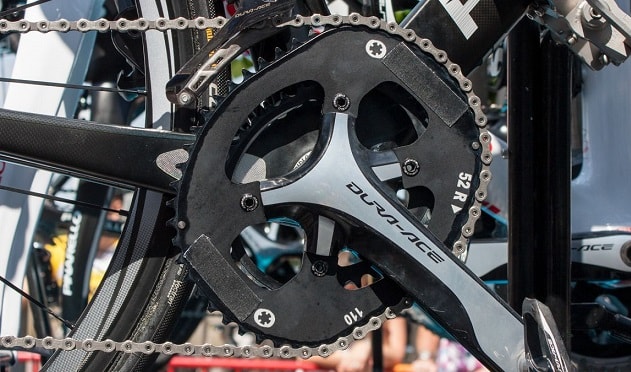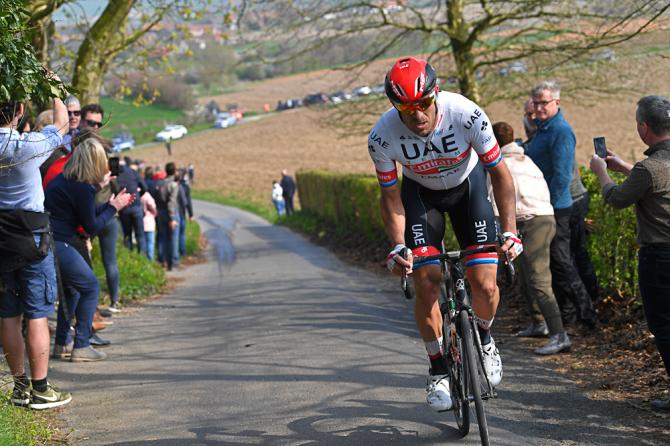Oval chainrings have been around since nearly the advent of chain driven bicycles. The concept is simple; but does it actually make a rider faster or more efficient? Or is this another gadget designed to separate you from your money?
Imagine your chainrings are a clock face, with your pedals in the 12 o’clock and six o’clock positions. This position is known as the dead spot, where it’s nigh-on impossible to create much pedal power. The radical design of ovalised chainrings supposedly enables you to apply more power throughout the dead spot, and hence produce more power on each pedal revolution.
The shape of the Osymetric rings and Rotor Q-Rings attempts to concentrate your pedaling power where your force is at a maximum, while effectively reducing the load where your power input is at a minimum. This decreased chainring radius helps you go faster through the dead spot.
For example, for a 56T at the top position (the dead spot) it is not a 56t, it is equivalent to a 52t (easier to think of it being the same diameter as 52t at this position). So, where you are at your weakest, the chainrings are at their smallest to help you go through that quicker. Where you are strong is where the maximum diameter of the chainring is. At the end you have a constant speed of rotation.
Osymetric claims to produce less lactic acid at your threshold power. On circular chainrings you produce more lactic acid because your vastus externus is employed for too long and being pushed too hard throughout the pedal stroke. Therefore the smaller muscles are used more than your larger muscles could be. With the adapted pedal stroke that Osymetric provides, all the muscles work proportionally to their strength. More muscle fibers are recruited by using the Osymetric shape throughout the pedal stroke which means that each has to work less. This is the theory.
Osymetric claims that you will increase your power 10% with their chainrings. Note that the power is not the speed however. The net result is claimed to be 1% faster and is slightly more efficient when you are climbing than when on the flat. The difference is 0.9 km/h when climbing, and 0.7km/hr when on the flat.
So why aren’t we all using them? Well, one reason is that they don’t come as standard when you buy a bike, so they’re an extra non-essential expense. Another is that they can reduce gear-shifting quality.
Oval chainrings are a divisive subject. Supporters point to physics to support their claims of greater power through lower effort. Peer reviewed experiments show the opposite and that the benefits are negligible at best.














